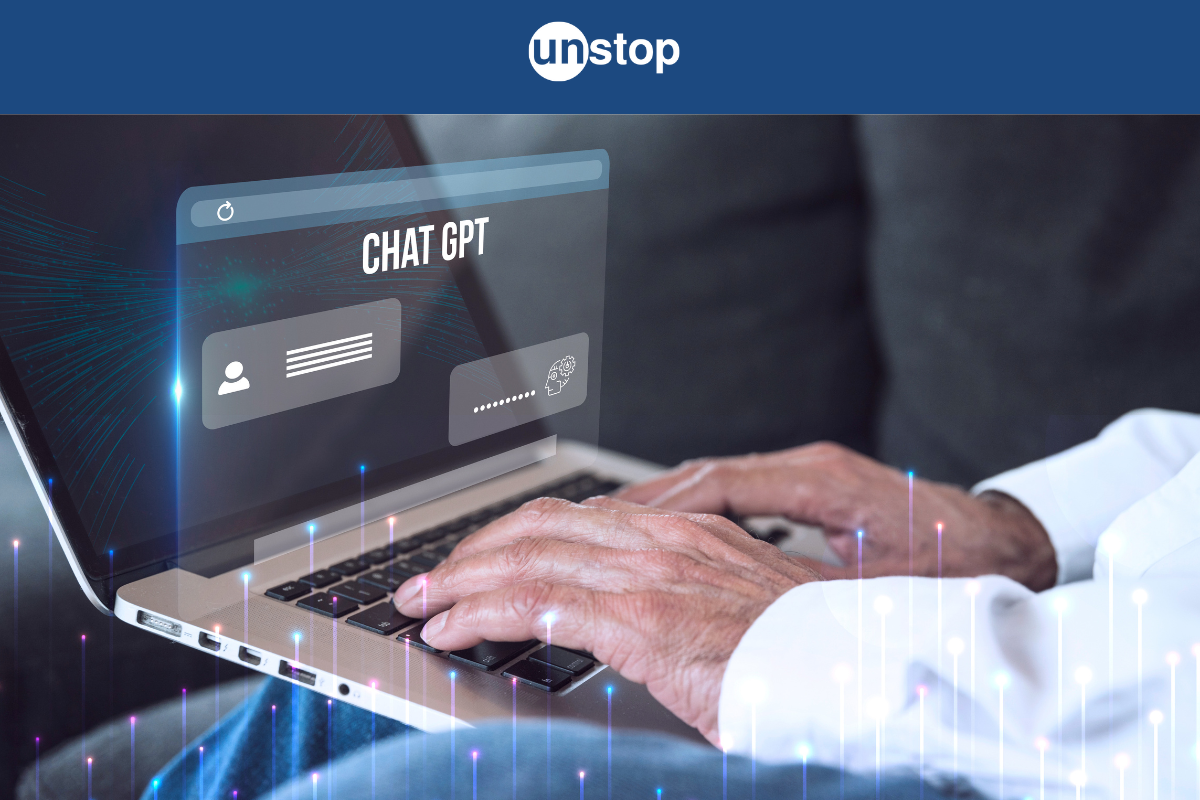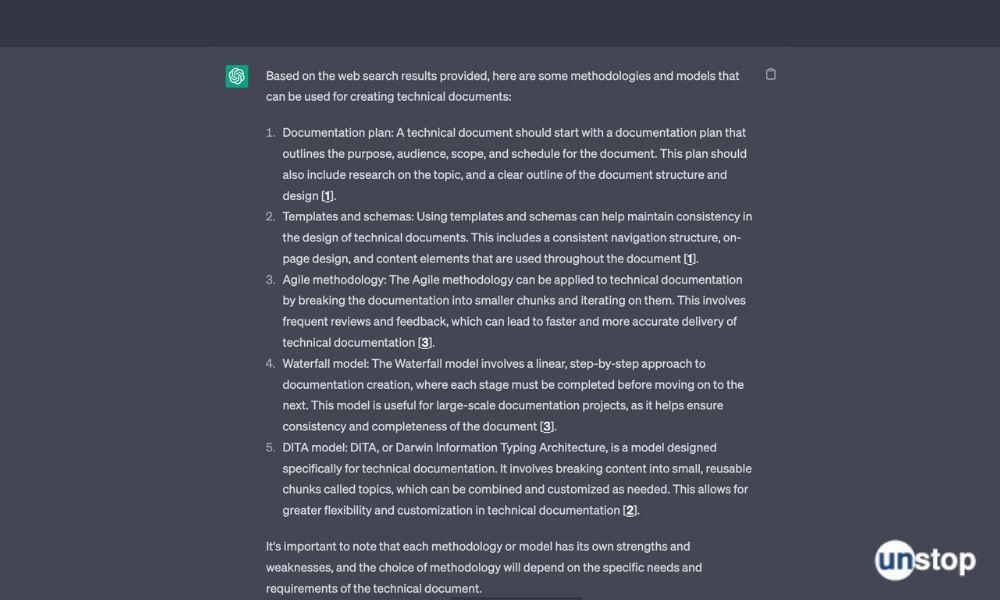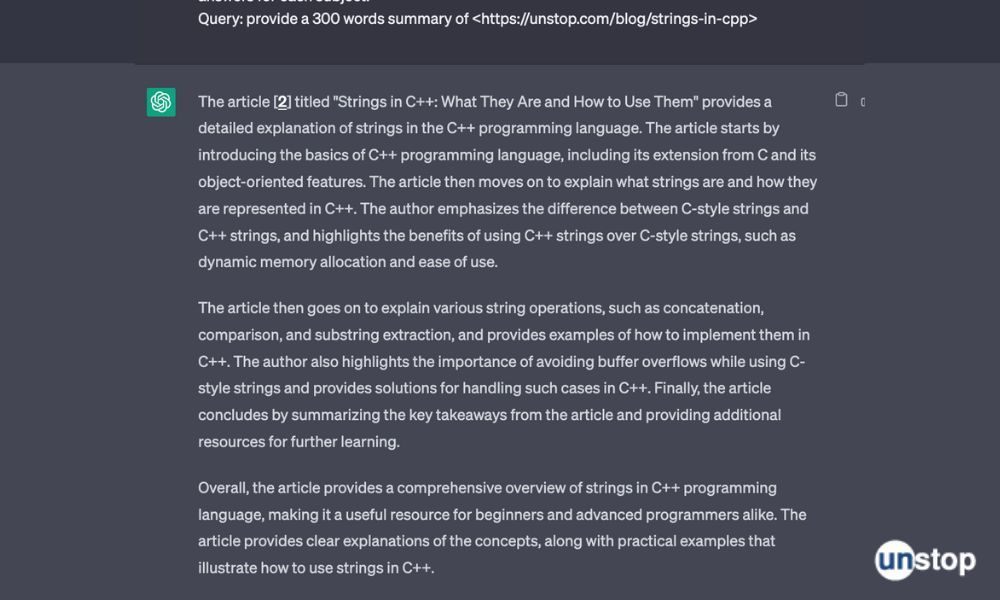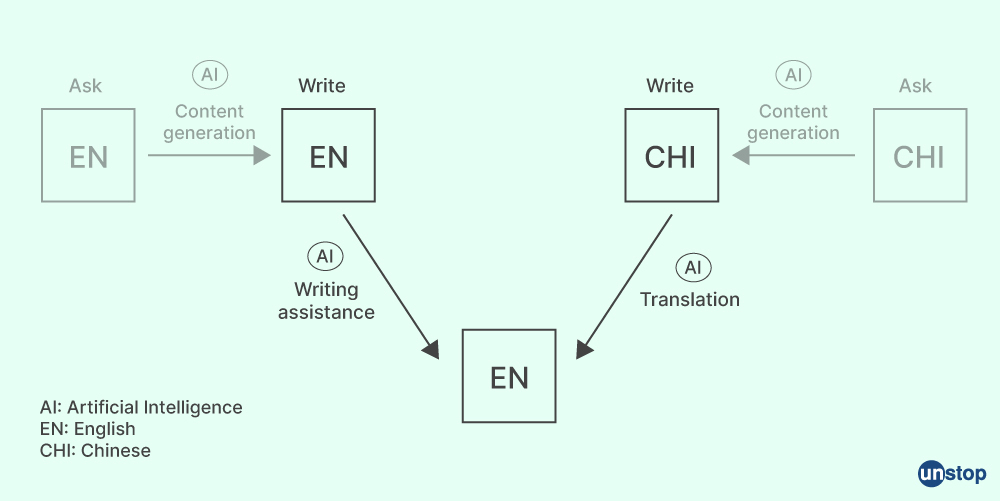- Different Types of Technical Documents
- Identifying Stakeholders
- Updating Information
- Document Consistency
- Organising Structure
- Suggesting a Methodology/Model
- Summarising and Translating Documents
Analyze Technical Documents Using ChatGPT: A Practical Guide

Analyzing technical documents is a critical skill for professionals and experts. At the same time, the ability to analyze and decipher technical documents comes in handy to the masses as well. AI-based technologies are becoming useful in this regard. The most popular among AI-based technologies is ChatGPT. Let's learn how you can analyze technical documents using ChatGPT.
Different Types of Technical Documents
There is a wide range of technical documents that one comes across during one's lifetime. It includes 'how-to guides' on various topics. Other than this, whenever you purchase a product, you get a small booklet (or a pdf file these days!) inside the package. These booklets describe how the product is to be used or handled. Then there are brochures, memos, and reports. Most of us would have seen such technical documents in our lives several times.
Those who are engaged in rendering professional services have to deal with a whole new set of technical documents. Some of these include:
-
Presentations
- Press releases
-
Newsletters
-
Business plans or proposals
-
Reviews
-
Style books or handbooks
- Developer-directed documents
Now, you may ask, "common people do not read technical documents every day!" Also, professionals and subject matter experts should not have any problem decoding technical documents as it is a part of their daily job.
But it is not true.
Since knowledge is dynamic and ever-evolving, the process of analyzing documents adopts great importance. So, while nobody would read and analyze it for fun, it is important that they know how to do it when there is a need.
Here, you can take a little help from the AI-based chatbot to assist you. You can analyze technical documents using ChatGPT in the following section.
Identifying Stakeholders
You can analyze technical documents using ChatGPT for identifying stakeholders. The process of actor extraction, relationship extraction, and network mapping is crucial while examining a document.
You can ask the chatbot to describe the actors involved in the process, such as users, organizations, state agencies, etc. Moreover, the current model version of ChatGPT can elaborate on the relationship the stakeholders have with one another. It would include commonalities of interest and the nature of responsibilities. Based on this information, a network map can be created.
For instance, a technical document explaining the impact of a particular policy of the government on a particular community would require listing the stakeholders and the role they play in the relationship. In this case, the stakeholders are the government and the members of the community. At the same time, the description of the impact of the policy on the community would highlight the relationship between both parties.
To do this, you can enter a simple prompt in ChatGPT and ask it to highlight the stakeholders or the actors in the technical document. It can be helpful in understanding whether the technical document, say a policy or a business strategy, is useful for the right audience or not.
Updating Information
Technical documents must carry the most recent information, whether it is statists, policy details, or other details. Professionals can analyze technical documents using ChatGPT to update the required information.
ChatGPT can help professionals and subject matter experts review content and highlight places that carry old and redundant information. ChatGPT can do a quick review of the document and inform the user which information has become redundant and how it can be improved.
For example, a company could be using templatized documents where it informs the readers about its history, expansion process, and revenues. Now, information like history may remain the same throughout the years. However, the expansion process and revenues would change. The company might have introduced a new portfolio which needs to be included in the new business document.
Similarly, product guides also need to be updated sometimes. The same product can be reintroduced with an updated specification. Let's say a company re-introduced a product with new dimensions.
In this way, ChatGPT can be useful in analyzing, locating, and updating information in technical documents.
Document Consistency
Technical documents have to be accurate. Professionals cannot afford to have any discrepancies in the documents. It is crucial for them to provide a coherent response.
However, it is tough at times. Technical documents are written by multiple authors. Sometimes, it also happens that authors who write technical documents are not experts in the field. Rather, they are content writers who have been commissioned the work of writing.
As a result of this, technical documents thus written may carry inconsistent style, layout, tone, etc. For this reason, they have to be edited before they are released for public reading.
Professionals can analyze technical documents using ChatGPT and check the consistency of a document. ChatGPT is capable of conducting text analytics to see whether there are discrepancies in the document.
You can use simple prompts and ask ChatGPT whether the technical document displays consistency across different variables of writing or not.
Organising Structure
A well-written technical document has a proper structure. The readers should be able to follow the thought flow when they are reading a technical document.
For instance, the structure of a report would have approximately ten parts:
- Title page
- Abstract
- Table of contents
- Introduction
- Methodology
- Results
- Discussion
- Conclusion
- Appendices
- References
The reason behind using a proper structure makes the document logical and prevents the readers from getting confused. For instance, in a science or business report, you have the results and discussion section after the methodology section. It allows the readers to understand what method was used to reach the results. However, if it is reversed, the readers would require more time and effort to understand it.
You can analyze technical documents using ChatGPT and arrange the structure of the document. The chatbot can offer help in giving a logical shape to a text. It can simplify the flow of a text by arranging the paragraphs. It can also work with large documents with multiple chapters.
Now all this is possible because ChatGPT operates on large language models assisted by a new technology stack, LangChain. The Natural Language Processing (NLP) capabilities of ChatGPT allow the chatbot to comprehend and provide human-like responses.
Along with this, ChatGPT is also capable of conducting sentiment analysis. With the help of this, it is capable of evaluating the emotional tone of the text and replicating it.
ChatGPT is also equipped with a sibling model, InstructGPT. When it is coupled with NLP and sentiment analysis, it is not difficult for the chatbot to analyze the structure of a technical document and suggest corrections.
Suggesting a Methodology/Model
Most technical documents are based on a model or a methodology. There are a number of ways in which a technical document can be written.
We asked ChatGPT what methodologies/models can be used for generating technical documents. Let's see what responses we received:

ChatGPT suggested a documentation plan. Here, it outlined the preliminary details of the process of writing a technical document, such as "purpose, audience, scope, and schedule of the document". It helps in creating the skeleton of the document.
The chatbot also recommended some other methodologies as well. One of them is the Agile Methodology. According to the AI-powered chatbot, with the help of this methodology complex documents can be broken down into "smaller chunks". In this way, it becomes easier to work with them.
The chatbot highlighted that professionals can also use other models, such as the Waterfall Model and the DITA model. In the Waterfall Model, the process of documentation is undertaken in a linear manner. On the other hand, the DITA model, aka Darwin Information Typing Architecture model, follows the alternative approach of breaking the document into smaller parts as topics and customizing them to suit desired needs.
The chatbot is not only good for narrowing down a methodology/model to meet the demands of the topic, but it can also use them. You can write a refined prompt where you can ask the chatbot to use a certain methodology/model and revise the technical document.
A defined methodology makes the task of analysis and the evaluation of a technical document easier.
Summarising and Translating Documents
ChatGPT also comes in handy when it is about summarising and translating documents. It uses natural language queries to reduce the technical document into a reader-friendly summary. We used ChatGPT to summarise a technical article on Strings In C++ from Unstop and provide a 300 words summary of it:

Additionally, technical documents often use discipline-specific jargon. For instance, government documents often use a standard variety of languages. In this way, common masses, who use a vernacular variety of the language find it tough to decode the meaning of the technical document.
Technical documents also become unapproachable because they are often available in popular languages. It is either the official language of the state/country, the regional language, or the global language (English). In this way, laymen find themselves in a difficult situation when they have to read them.
These issues pose a serious problem in analyzing technical documents. You can analyze technical documents using ChatGPT and break the language barriers with its NLP technology.
This generative model, ChatGPT, solves this problem with the DeepL technology. The technology allows you to undertake complex linguistic operations like language translation. For instance, if a document is written in Mandarin (a variety of Chinese languages), it can be translated into English using ChatGPT (see image below). In this way, people from all the English-speaking countries can read them as well.

So, these were some of the examples of how you can analyze technical documents using ChatGPT. The chatbot comes with AI-powered technologies to assist professionals make the process easier.
Hope you like this article. ChatGPT is the most powerful tool out there right now. A proper understanding of this chatbot can allow you to grab tons of opportunities.
To help you learn more about ChatGPT, we have brought several articles on the topic. Don't forget to have a look at them.
More ChatGPT articles:
- The Impact Of ChatGPT On Job Market: Risks And Opportunities
- Top 8 Important Engineering Project Ideas Using ChatGPT For 2023
- Ethical Implications Of ChatGPT: The Good, The Bad, The Ugly
- ChatGPT For Financial Analysts: Advantages And Some Limitations
- Key Capabilities Of ChatGPT In Customer Service Industry In 2023
An avid reader and an ambitious traveller, I like to curate stories. The instinctive desire to explore the unchartered territories of the unknown and unseen inspires me to find wonder in the cosmos. I find solace in the embrace of nature, and hope to create an environment of peace wherever I go.
Login to continue reading
And access exclusive content, personalized recommendations, and career-boosting opportunities.
Subscribe
to our newsletter
















Comments
Add comment